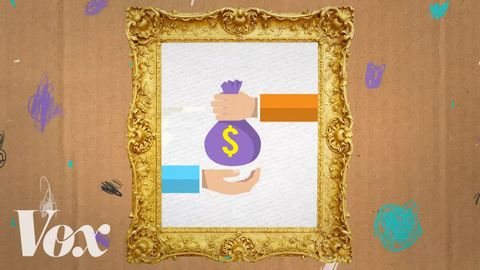跟著公式這樣賣,藝術品可以賣到百萬元!(The formula for selling a million-dollar work of art)
Emily 發佈於 2019 年 03 月 25 日  沒有此條件下的單字
沒有此條件下的單字US /pəˈtɛnʃəl/
・
UK /pəˈtenʃl/
- adj.可能的;潛在的;潛在的
- n. (u.)潛力,潛能
- n. (c./u.)潛力;潛能;潛在候選人;勢
US /ɪk'strimlɪ/
・
UK /ɪkˈstri:mli/
- adv.極端地 ; 非常地;非常;從極端的角度來看
US /kənˈvɪns/
・
UK /kən'vɪns/
- n. (c./u.)感覺;意識;含義
- v.t./i.傳感,感覺,感知;感覺,官能
